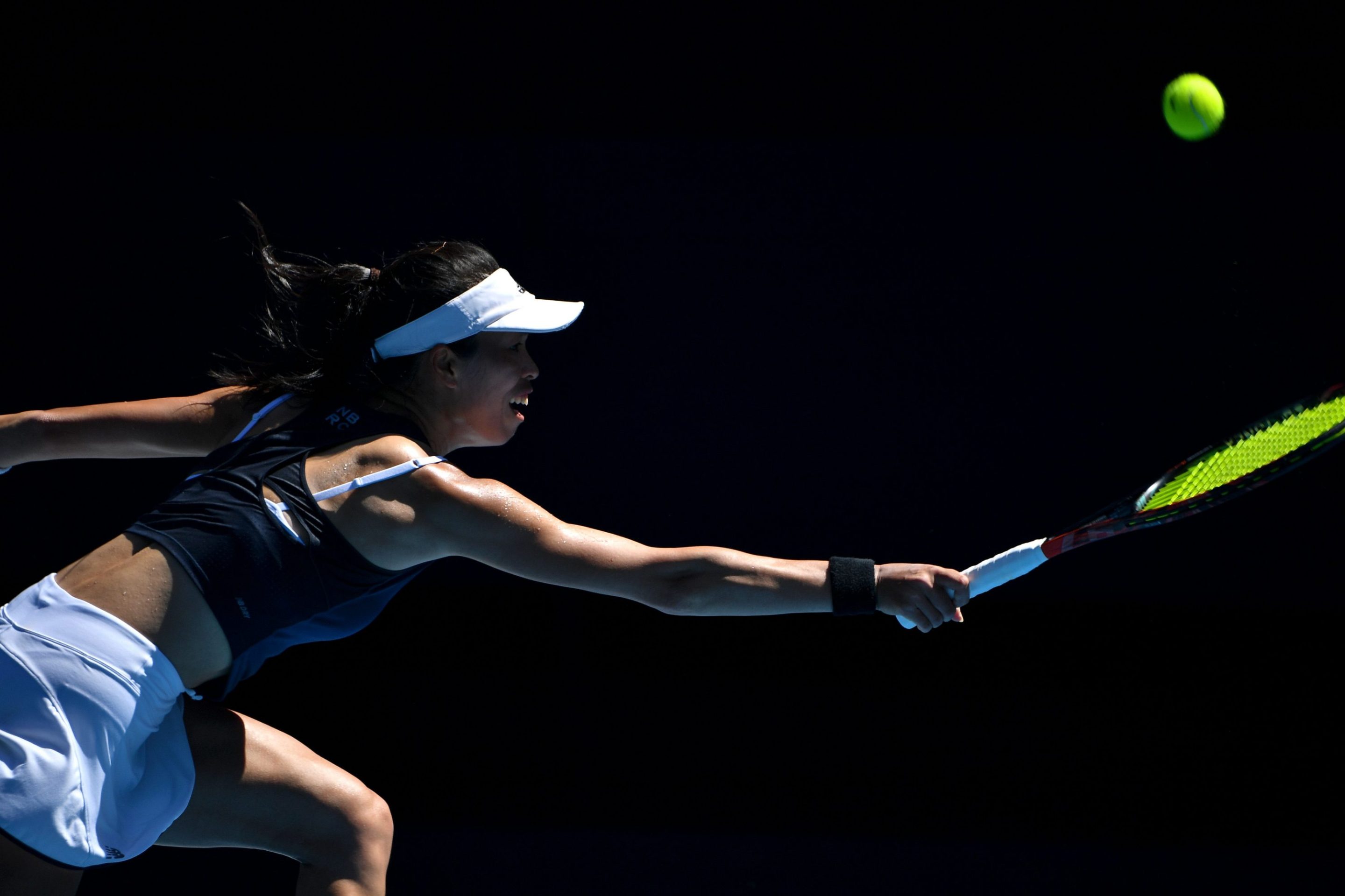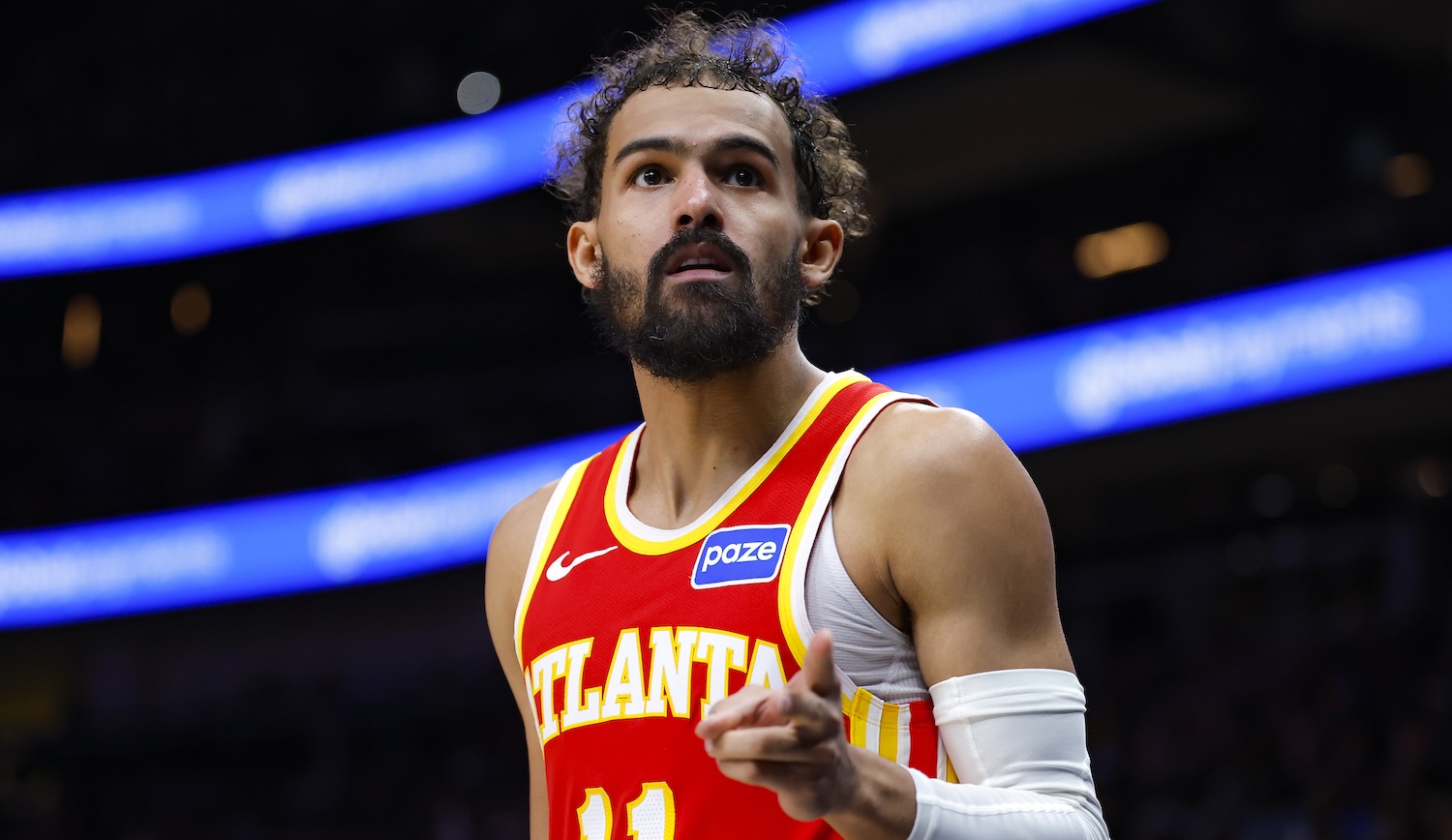Our story begins, like almost no good ones, with a picture of my television displaying a chart from a Tennis Channel broadcast:

High-speed cameras track the flight of a struck tennis ball, allowing a count of how many times it revolves in the air, and an estimate of its revolutions per minute. RPM is a measure of topspin, a foundational concept in tennis. It's what lets a player hit hard while keeping the ball in the court; it's a key distinction between you whaling a ball into the neighboring parking lot and a pro hitting it at the same velocity but nestling it snugly inside the baseline.
One genius of topspin on the women's tour is Bianca Andreescu, a 20-year-old who won the 2019 U.S. Open only to spend almost the entire interim trying to get healthy enough to play a single tournament. Among the most blissfully indifferent to topspin is Hsieh Su-wei, a different kind of genius, who is 35 years old and presently ranked No. 71 in the world. What the chart above says is that Hsieh hits 45 percent of the topspin of Andreescu on the forehand side, and 55 percent on the backhand side. It's as big a gulf as you will ever see in a pro match. The entire women's tour could fit inside it.
Their second-round meeting Tuesday at the Australian Open marked Andreescu's second match at a major since she lifted the trophy at one. She came in as the eighth seed, off the strength of her 2019 season, and eked out an error-strewn three-set victory in the first round. A player returning from a layoff sorely needs rhythm—steady points with familiar shot patterns that revive footwork and timing—and there is no worse place to seek rhythm than against Hsieh. Rhythm is derived from conventionally struck shots with predictable shape and speed. The opposite of rhythm is junk. Old folks with high socks who haunt tennis clubs love junk. Junk is hacking and chopping and poking at the ball, pooting it over the net at off-speeds, never the same way twice; it is intolerable in person but divine on the pro tour. Many of my favorite players ply junk, taking the zip out of the ball and the life out of the point. They stand out from the homogenous ranks of baseline power. Andreescu had the misfortune of playing her second match in 15 months against an internationally recognized junk artist.
This straight-set win was a journey into the Hsieh mindset: Topspin is for normies; pace is for cowards; nothing is unretrievable; convention is the cage of simple minds. Junk is the way. Can you guess if her next shot be struck with one hand or two? Your predictive models aren't powerful enough. Can you even name that last shot? She has developed a style of play resistant to the usual idioms or keywords of 21st-century tennis language. It's not quite a slice and not quite a flat drive; it's just a way to swing the racket improvised to suit the situation at hand. Every stroke is bespoke. You could not codify this in a textbook, and you will never see a player hit more winners standing there with both knees completely locked. Truly, what even is this:
Su-Wei Hsieh showing off all her shots. Up a set against Andreescu. #AusOpen pic.twitter.com/bs3iFc8faz
— Tennis GIFs 🎾🎥 (@tennis_gifs) February 10, 2021
Hsieh stepped into the court to hit a two-handed forehand approach ... drop shot? A description is futile. The same could be said for her biography, which has slowly taken on Pynchonian contours. Hsieh enjoys lockpicking as a hobby. She learned it from her father, who worked as a locksmith, key copier, and bus driver while teaching his seven children to play tennis in small-town Taiwan. (“He walked by a tennis court and said, ‘Wow, I never seen this sport,’ and the next day he brings us in and coaches us,” she told the New York Times in 2019.) She is so agnostic to court surface that she went to Central Park and practiced on clay during the hard court U.S. Open. ("I don't have much feeling with the court," she said Tuesday.) Unspecified family matters waylaid her tour life for years. China and Taiwan fought a proxy war over her booze endorsements. Hsieh first started beating top-10 players in 2017, at age 31. Now she has eight wins to show for it, and a 4-3 record against them in the majors in that span.
Hsieh's latest conquest, Andreescu, played this match unevenly, but at times mashed heavy topspin forehands like no one else on tour, reminding the world of her upside and heightening the stylistic contradictions of this fight. But she served too poorly to stay competitive, and none of her baseline rust was ever going to be dislodged by this vexing matchup. Andreescu's 6-3, 6-2 loss is an upset on paper but not with any context. The Queen of Junk is an inhospitable welcome back.






